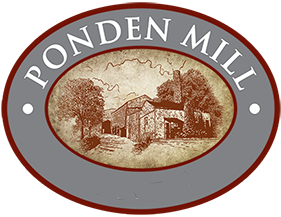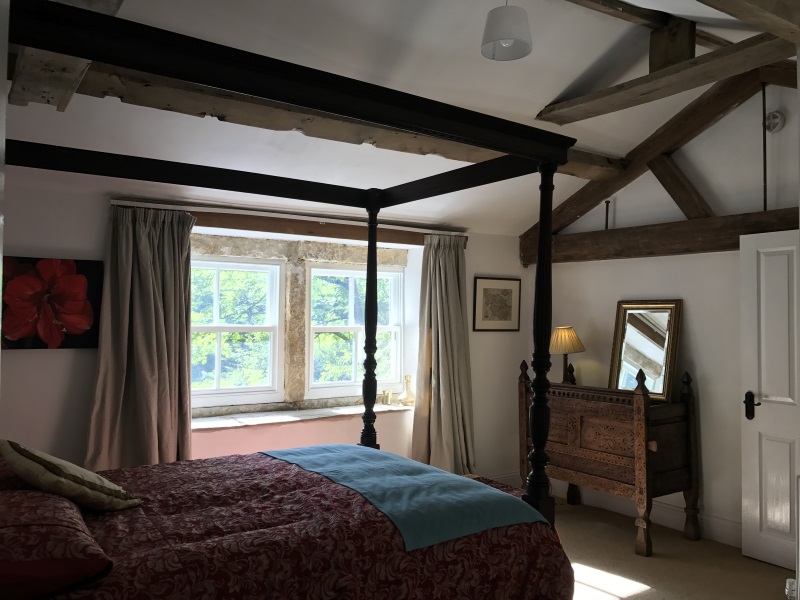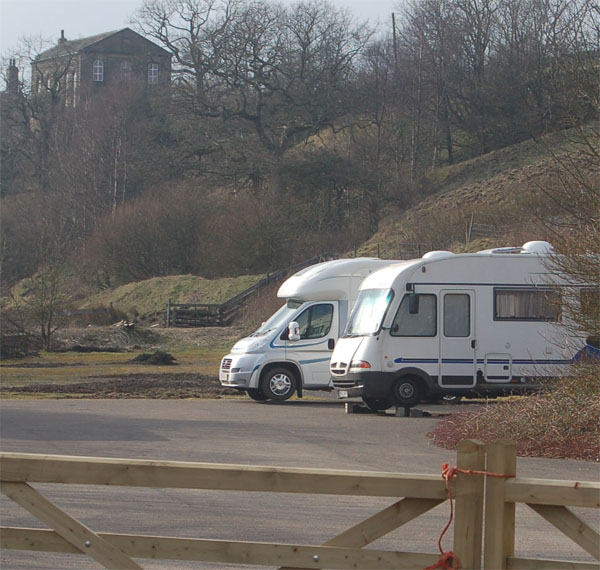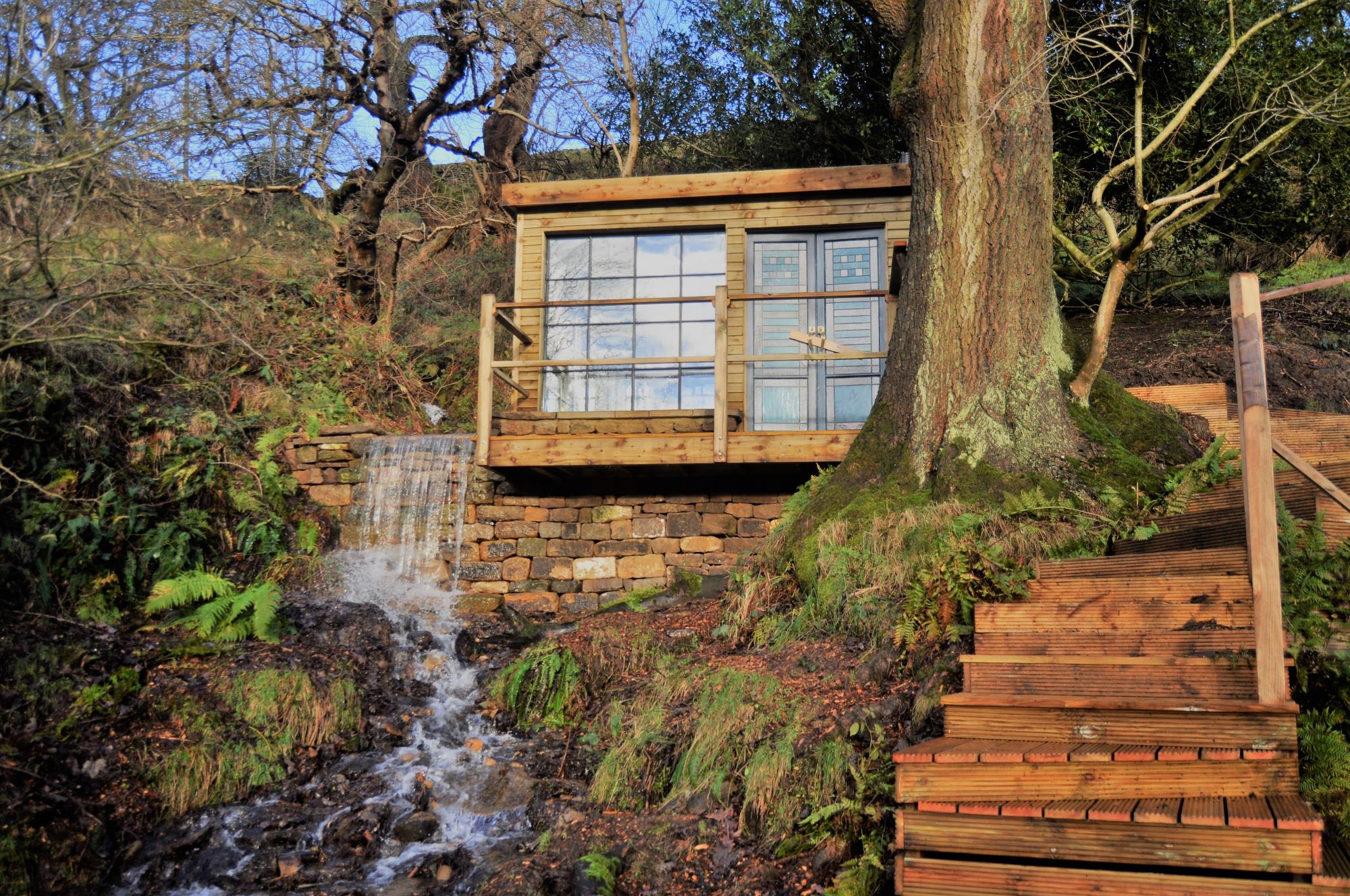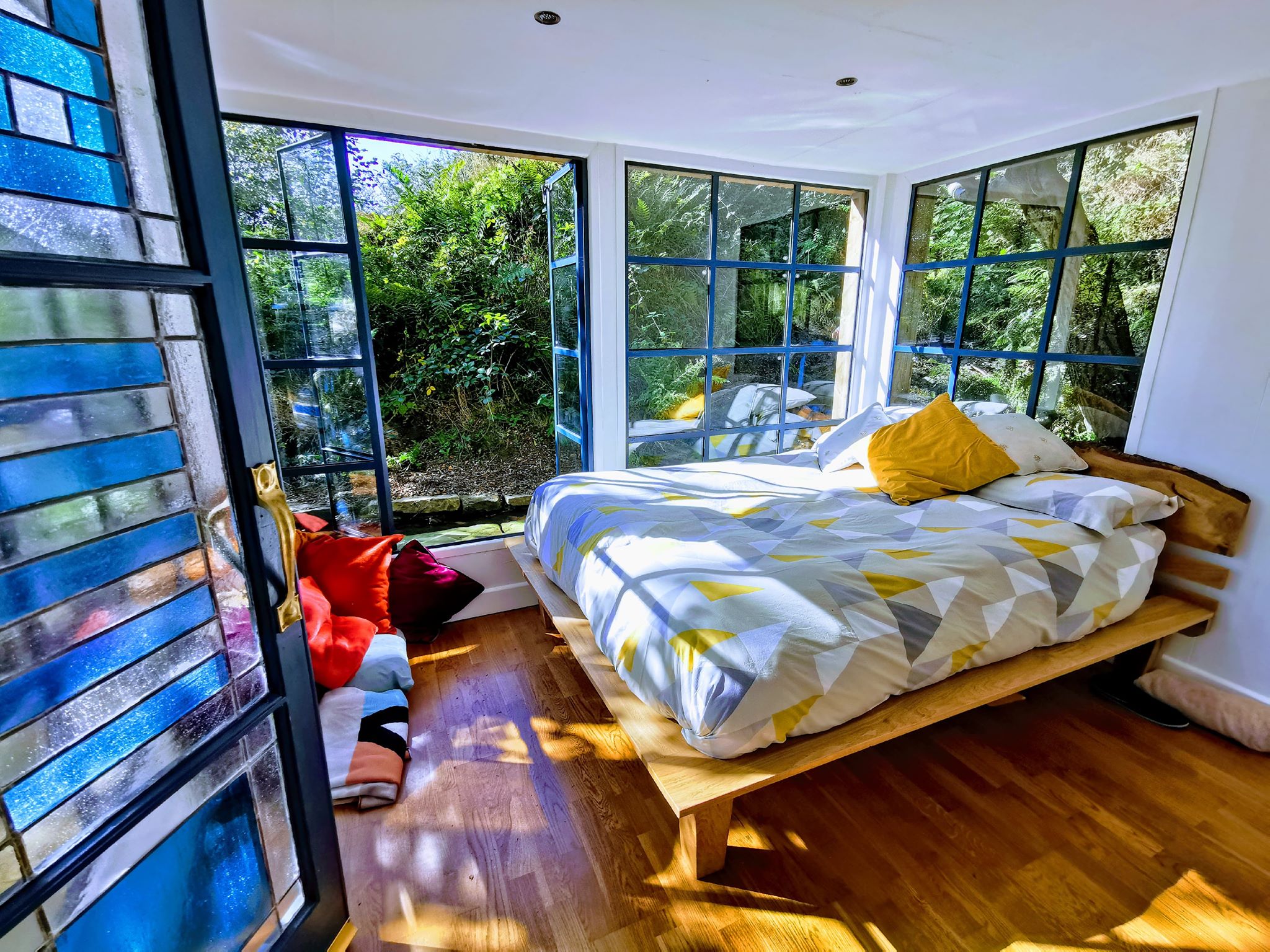Ponden Mill was the first textile mills built in Stanbury and one of the first in the region. It was built by the Heaton family of Ponden Hall who had various business interests including about 40 worsted spinners working in their homes locally. Worsted is a fine wool and differs from woollens wool by the length and arrangement of the fibres. Worsted might be used for making a suit as opposed to woollens that might be knitted into a jumper.
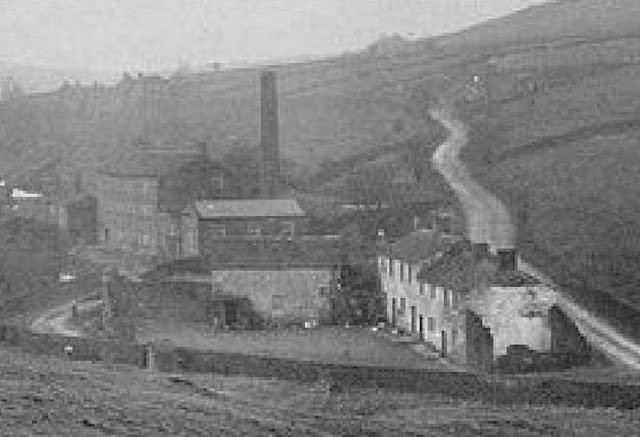
After 1787 the price of worsted fell dramatically and the Heatons felt that switching to the Cotton industry made financial sense. So the plans to build Ponden Mill were made and work started in 1791.
Oak was brought in from as far away as Barnsley and the mill was completed in 1792. Production then began. Cotton bales ended their long journey, usually from the southern states of the United States, by being taken on carts from Colne to Ponden Mill. Then the cotton was woven into yarn and then made into cloth, and then journey reversed as the finished goods were sold in many cases back to the places that grew the cotton.
The workers of Ponden came from the local area and included children. For example the Children of John Taylor of Stanbury (Henry and Martha) were sent to work at Ponden by their father and they were paid Three shillings and nine pence weekly. The documentation doesn’t say how old they were but some cotton mills employed children as young as 7. Frequently their parents were also employed at the mill. Children were given the worst jobs in the mills since small fingers and nimble bodies could get in and under machinery that adults couldn’t. The Factories act of 1833 did improve their conditions greatly but it was still a difficult and dangerous life.
Ponden Mill was originally powered by a 29 foot diameter, and 12 foot wide, waterwheel. The wheel was originally inside the building which is slightly unusual, but Cotton needs a damp environment for spinning so perhaps that is the reason for the positioning.
The mill had large windows for its day but internal lighting was still necessary. Unfortunately all that was available was tallow candles and oil lamps. The resulting fire of 1795 caused severe damage at the mill and some signs of burning can still be seen. The Heaton’s had fire insurance and repairs were quickly done and the mill put back into production.
The next 50 or so years were not great for Ponden. The Napoleonic wars cut off all of the European customers from purchasing cotton products. Ponden did benefit from supplying some of the yarn used in the British uniforms but that wasn’t enough. Most of the cotton mills converted back to Worsted and the Heaton’s severe financial difficulties resulted in the letting and eventual sale of Ponden Mill.
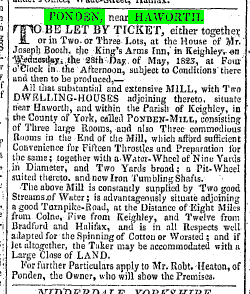
Just after the mill was let the new owner didn’t feel the water wheel was giving enough power so he added a steam engine to work in conjunction with the wheel. The Chimney and steam engine room date from this time.
The Great Bog Explosion of 1824
On September 2nd of 1824 Patrick Bronte (father of the Bronte Sisters) was waiting for his children to come home, they were late. He was looking out the window when he heard an explosion. The peat bog above Ponden Mill had spontaneously exploded, leaving a crater 1200 feet wide and sending a 7 foot high wave of water, peat, and stones cascading down the valley. The Bronte children were discovered hiding in a porch and the bridge at Ponden Mill was washed away. The story goes that Children and other workers at the mill took refuge in the upper floors.
The Great Lancashire Cotton Famine
Mills could be converted from Cotton to Worsted and there appears to be a continuous fluctuation between the two as far as which was the most profitable. In the 1860’s Worsted was king because of the great Lancashire Cotton famine being triggered by the American Civil War. When Lincoln blockaded the southern ports no cotton could get to Britain and 3 out of 5 workers were out of work. It’s interesting that the north of England were great supporters of the abolition of slavery, yet during some celebrations mills hoisted the confederate flag. Obviously liberal support against slavery had its limits when the supply of cotton was affected.
Production continued through the latter part of the 19th and early 20th centuries. In 1937 mains electricity was installed and the water wheel was dismantled. The drive shafts that distributed the power through the building were also dismantled and each machine given its own electric engine.
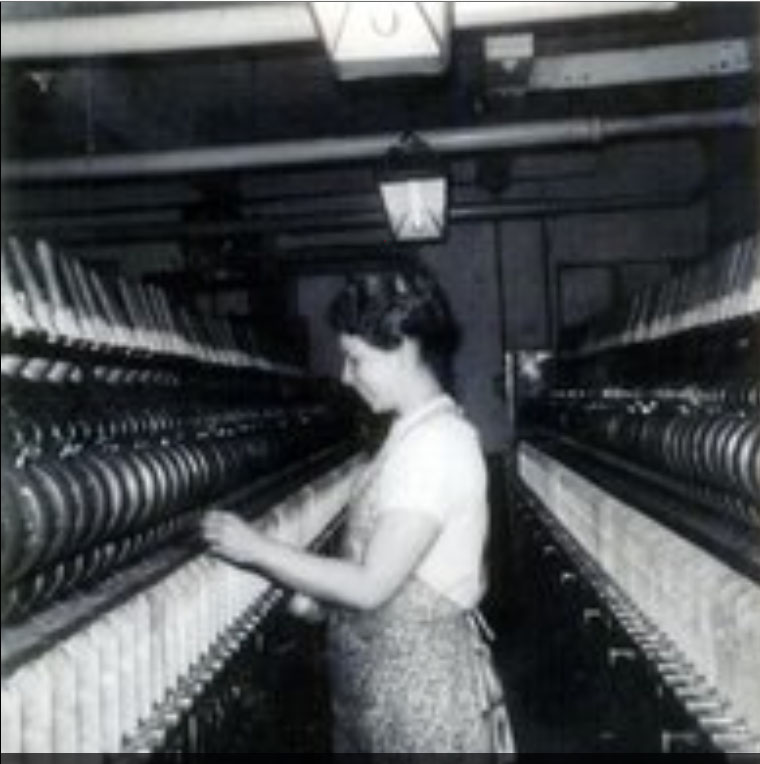
Foreign competitors, a decline in the market, and a string of mergers eventually lead to Ponden Mill being sold in 1973. Barry Brookfield bought the mill and stated selling linens from the site. Eventually he added a café in the Mill that became extremely successful and popular. People would come by the coachload and visit on their way to or from Haworth. He built the Ponden Mill Brand into almost 250 shops nationwide.
Eventually the market shifted, several mergers were done but in 2008 the Ponden Empire finally closed.
Within a week of it closing the Ponden Mill was vandalized completely. The roof and floor were stolen along with all of the wiring. The internal destruction was extreme and the building was left derelict for 6 years.
Until some silly people decided to try and bring it back to life.
The Ponden Band
John Heaton of Ponden who owned the mill formed the Ponden Band. The band was active in 1854 and had the job of playing at a celebration in Haworth at the conclusion of the Crimean war. The band moved to Dry Clough (just north of Pickles Hill) later in the 1850s for the convenience of some of the members, but others went on to form the Haworth Band which is still active today.
Ghosts at Ponden
Ponden Mill is haunted. There has been a wealth of incidents and sightings over the years. There is a Victorian lady who likes to visit a small upstairs room, as well as a well-dressed gentleman who likes the first floor.
However the stories of the children are unique. When Ponden was converted into a shop in the 70’s they had toys on the top floor, and apparently the staff had real problems keeping the stock on the shelves, because every morning the toys would be out of their boxes and spread around the floor.
Another staff member told the story of how it was her job to lock up the building after everyone had left for the night. As she was doing so she heard a boy crying. She and a colleague searched the mill repeatedly and there was no one in the building. Older locals people confirmed that there was the ghost of a boy who died after getting his arm caught in one of the machines.
Scar Top Chapel
Overlooking Ponden Mill is Scar Top Chapel. Built in 1818 but then rebuilt in 1869, it is a beautifull Chapel and is considered to be the inspiration for "Gimmerton Chapel" in Emily Bronte's Wuthering Heights.
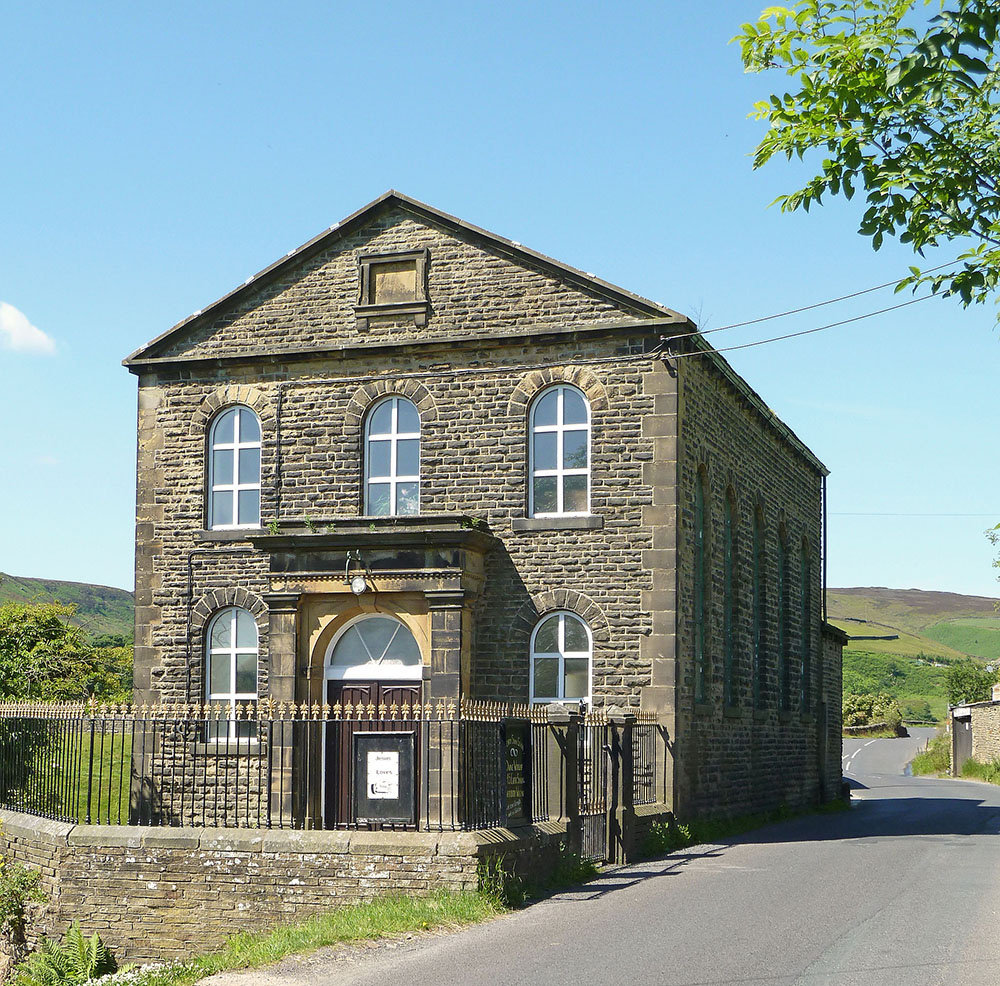
Copping On at Ponden
Like most churches in the area, the highlight of the Scar Top chapel year was the Anniversary service, known as the Charity or ‘Copping On’. This would be an open air service with choir, band and visiting preachers.
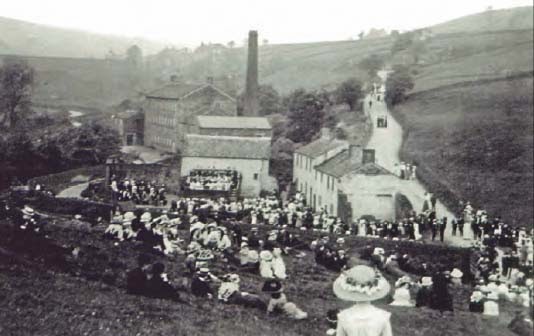
The events would attract hundreds or even thousands of people travelling from neighbouring villages or those as far away as Lancashire or the Calder Valley. People would wear their best clothes, bring a picnic and make a day of it. Chapels would be in competition for who had the best Charity, often focusing on the takings of the collection plate.




